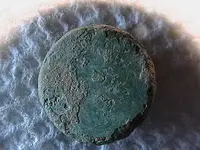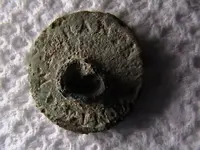WHADIFIND
Gold Member
- Joined
- Apr 9, 2012
- Messages
- 12,378
- Reaction score
- 40,902
- Golden Thread
- 1
- Location
- South of the Mason-Dixon Line
- 🥇 Banner finds
- 1
- 🏆 Honorable Mentions:
- 4
- Detector(s) used
- Garrett AT-MAX
Garrett AT-PRO,
Garrett Groundhog,
Pro-Pointer,
Jack Hammer!
- Primary Interest:
- All Treasure Hunting
This appears to be an early 1800's button. It's tiny. Usually when I find these I can't see ANY detail on them. But, somehow, this tiny little survivor managed to hold onto a few letters on the back. Even after, who knows how many years in the ground?
Anyone familiar with this back marking? I think it says Warranty Fine.
Thanks!
HH!
Anyone familiar with this back marking? I think it says Warranty Fine.
Thanks!
HH!





 )
)